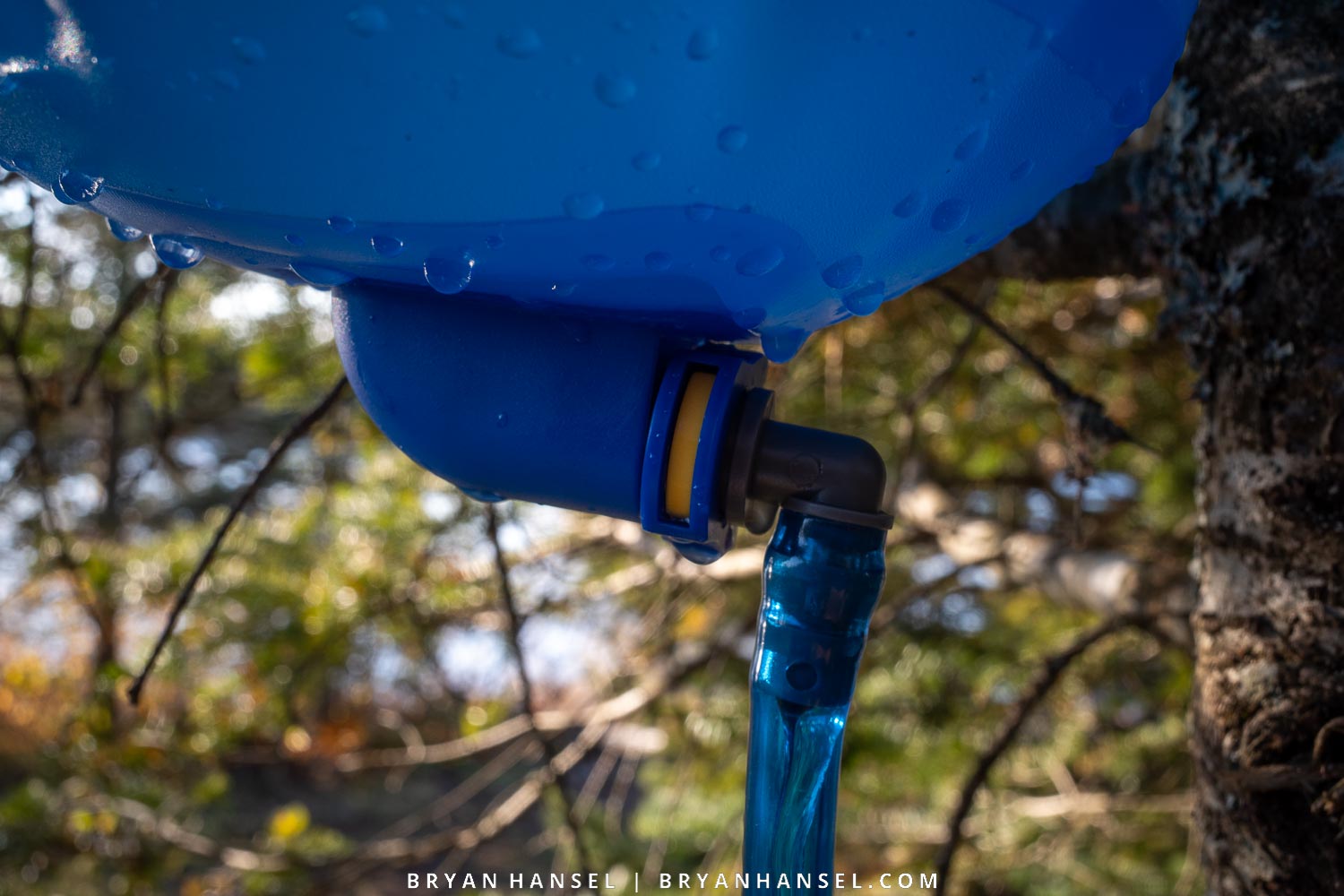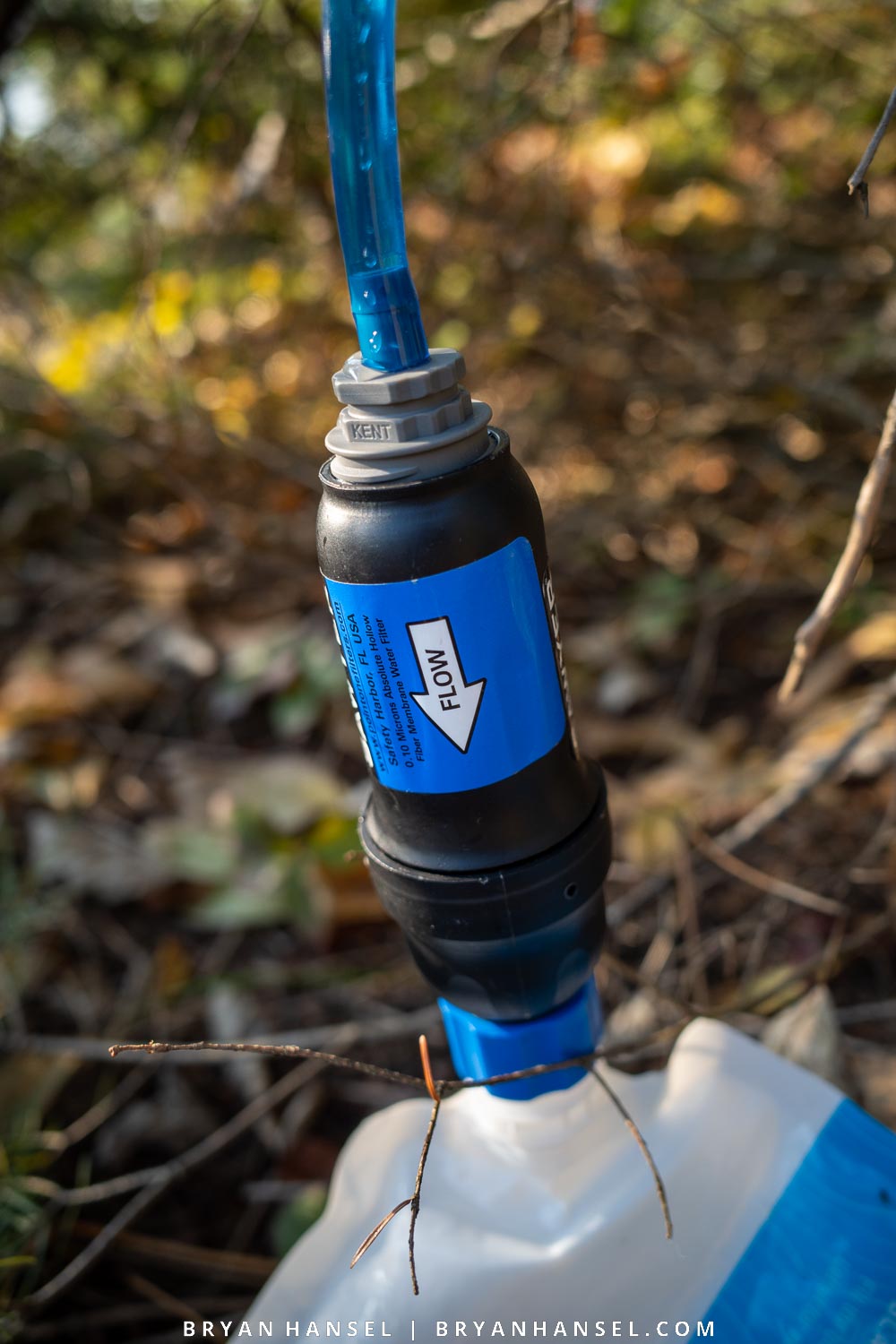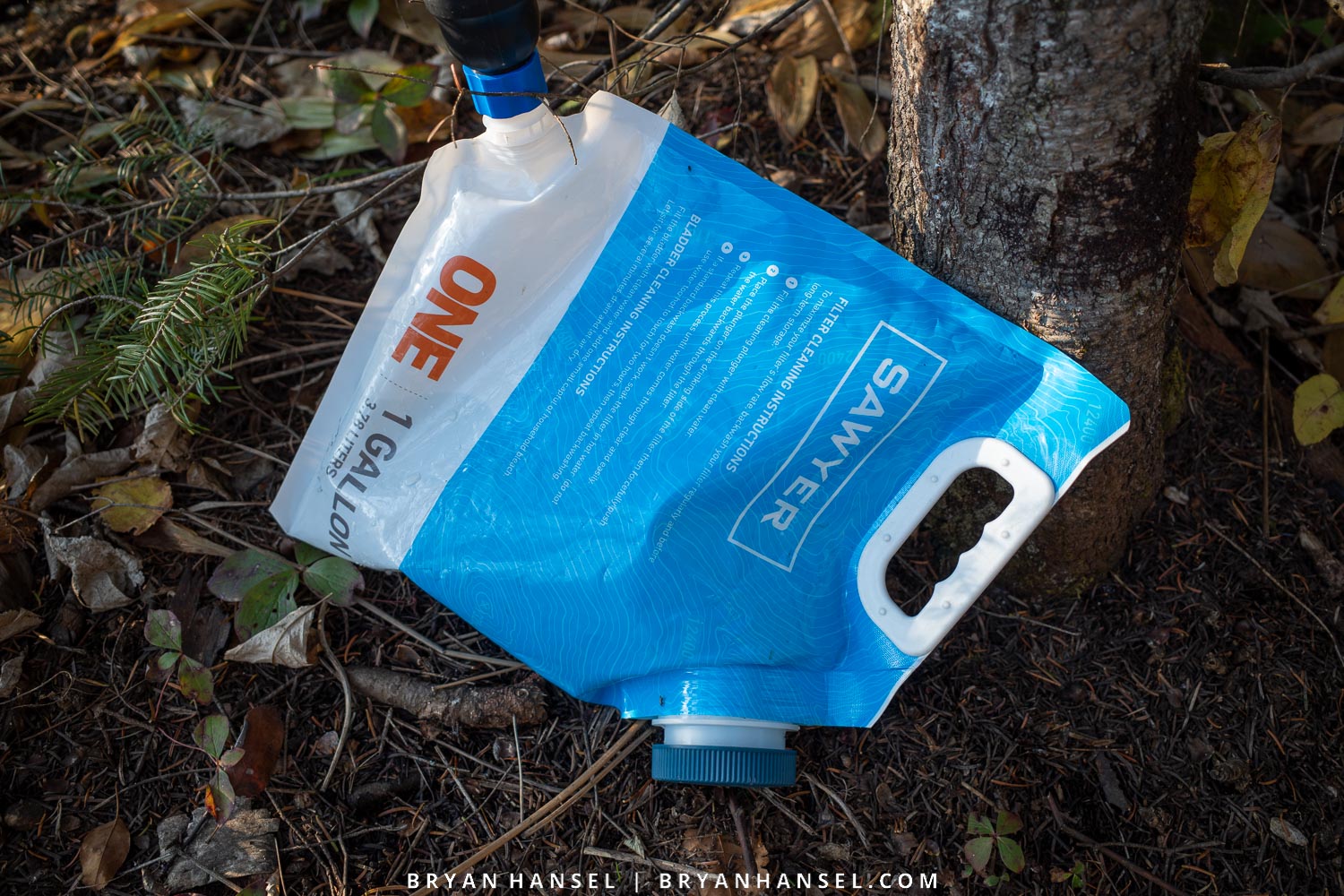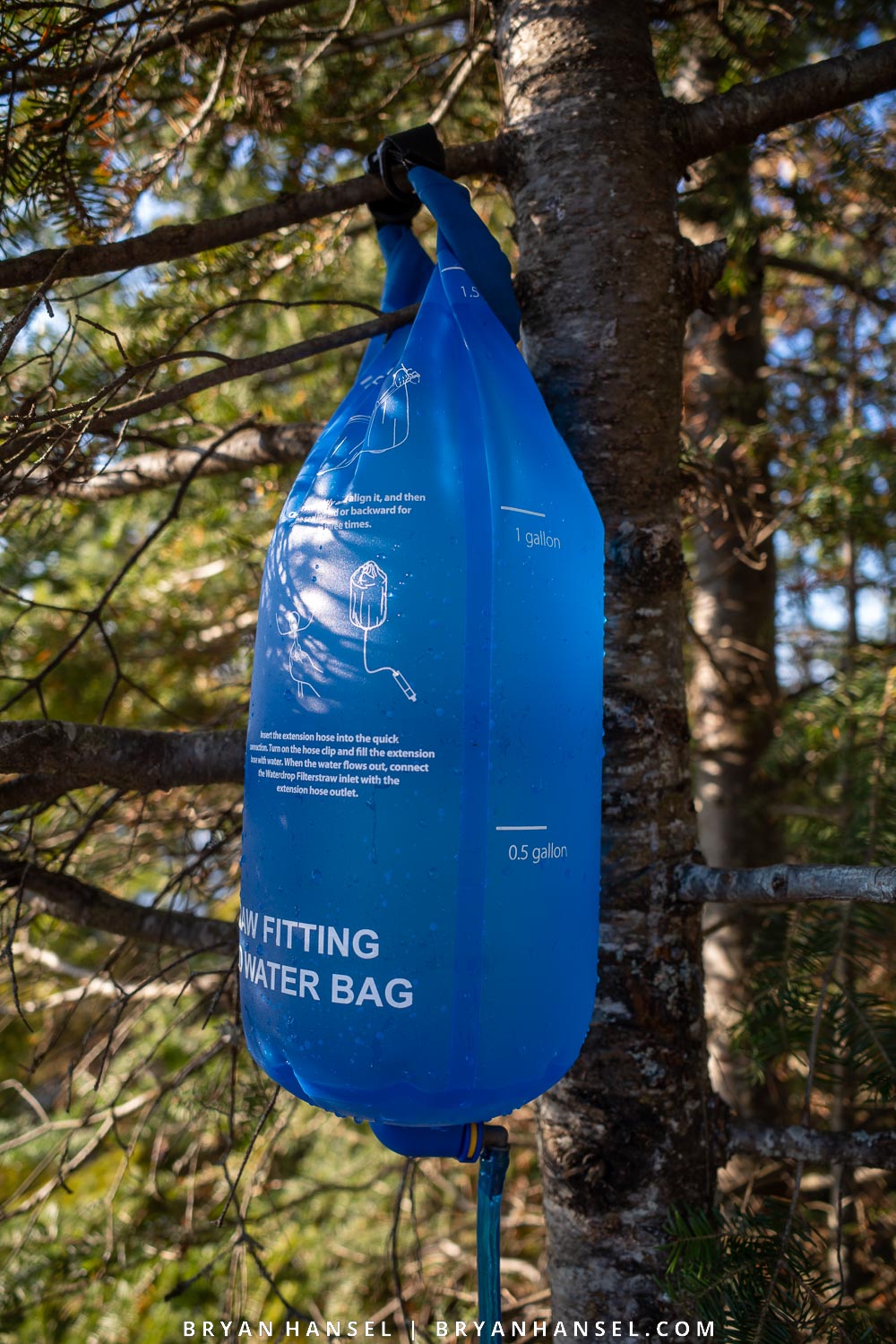DIY Sawyer Gravity Filter • PaddlingLight.com
One of the challenges of a group paddling trip is treating enough water for everyone. According to the U.S. National Academies of Sciences, Engineering, and Medicine you need about 3.7 liters of fluids a day for each man and 2.7 liters for each women. For my family, that’s around two gallons to three gallons of water a day. To meet the need, we’ve been using a DIY Sawyer gravity filter system. I’ve experimented with it over the last several years and think that I’ve finally found the right combination of gear to make it work for us.
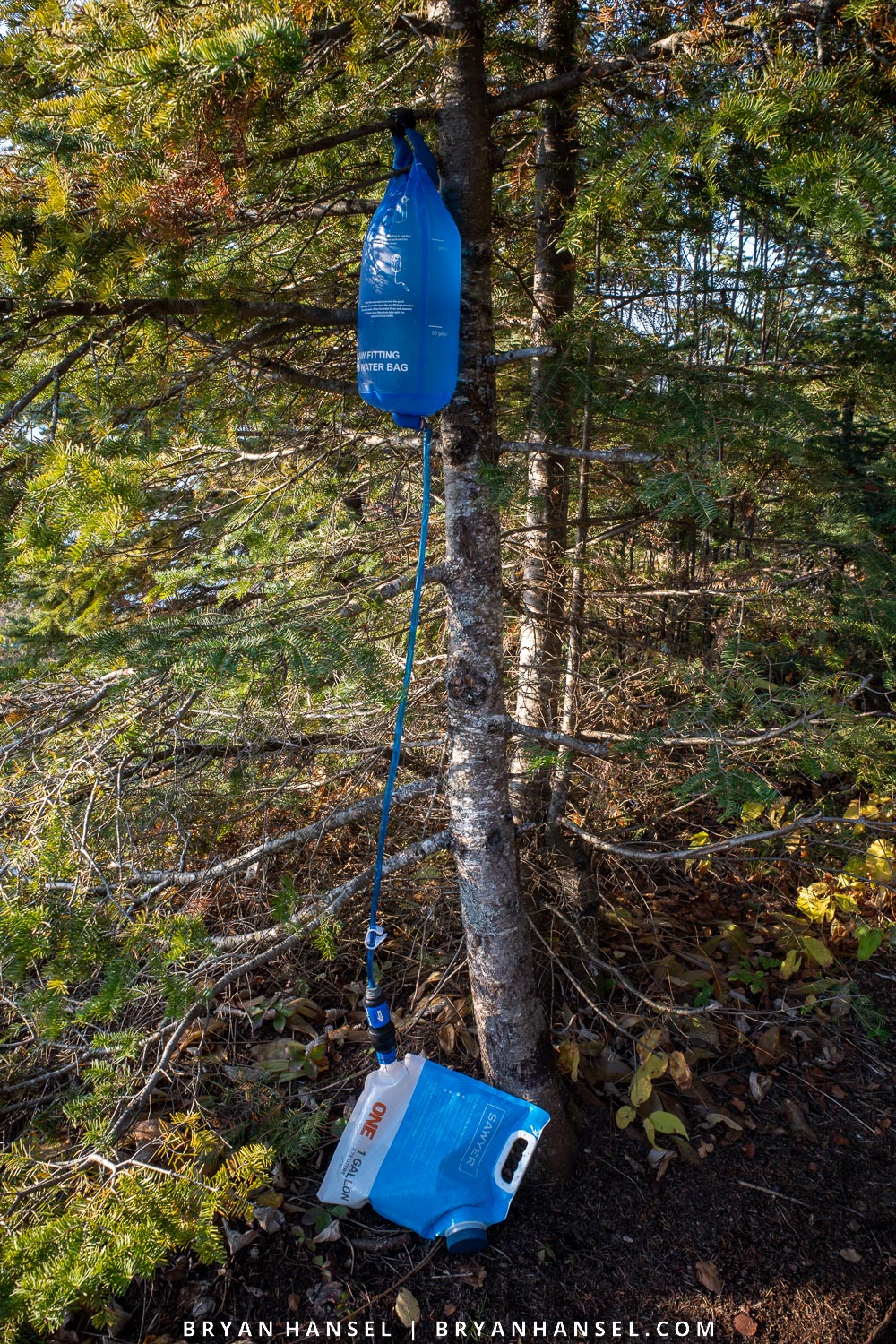
The following is the list of gear that I’ve settled upon and a brief description of why. The links go to Amazon instead of a bunch of different stores. If you prefer REI, you can get the Squeeze there, too. They don’t carry all the other parts you need for this though. Amazon is the only place that I’ve found that carries all the parts to make this work.
Sawyer Squeeze: The original Sawyer Squeeze is the biggest version and moves water through the system quickly. Due to the larger size, it needs fewer back flushes. This works perfectly for a high-volume DIY Sawyer gravity filter. We’ve experimented with other Sawyer filters trying to save an ounce or two, and it isn’t worth the extra hassle.Waterdrop Gravity Water Bag: This bag is designed for a different filter system but is available for purchase à la carte for use with a DIY Sawyer gravity filter system. Out of all the bags that we’ve tried, I like this one best because it holds 1.5 gallons and has a big opening. The big opening makes it easy to fill. After filled, you roll it closed like you would a dry bag. The dry-bag-style closure also clips around a tree branch, so you don’t need any extra rope to hang it. We also use this to haul water to put out campfires on the rare occasion that we have one. The hose is a bit longer than needed. I’ll likely cut it in half before our next trip. The hose weighs 2 ounces.Sawyer One-Gallon Bladder: With a Sawyer Coupler, you can connect the Squeeze directly to this bag. You could use other bags, but I haven’t found one that’s at least one gallon and fits the Squeeze perfectly. You can also use this bag to back flush the filter. By using the bag to backflush when needed, you avoid having to carry the 1.1-ounce cleaning syringe.Sawyer Products SP150 Coupling: You need this part to connect the clean-water output of the filter to the Sawyer One-Gallon Bladder. This is the $2 part that makes it all work. This also allows the filter to be connected to other bladders if you don’t want to filter into the one-gallon one. You can also use this to connect to a SmartWater bottle to use the SmartWater bottle to backflush. If you use a Sawyer Squeeze, you should have one of these.Sawyer Products Inline Hydration Pack Adapter: This adapter connects the input side of the Squeeze to the Waterdrop bag hose. Sometimes this comes with the Sawyer Squeeze. If it does with the version you are buying, then you won’t need to buy this separately. You only need the grey adapter.
DYI Sawyer Gravity Filter Weight Breakdown
After you get all the parts, here are the weights as measured on my scale.
For a three-person group, the DIY Sawyer gravity filer ends up being 4.7 ounces per person plus water bottles. If you use empty SmartWater bottles, you’ll end up at 5.9 ounces per person. Considering that a Sawyer Squeeze plus a SmartWater bottle is 4.7 ounces, 5.9 ounces seems pretty good for a gravity system.
How to Set It Up
The setup is easy on this system. First screw the inline hose adapter into the dirty side of the Squeeze. Then screw the coupler onto the clean side of the Squeeze. When doing this make sure to insert the white washer.
Next you plug the hose from the Waterdrop bag into the inline hose adapter. Because the Waterdrop bag offers a quick connect system, we found that we never needed to unscrew the inline hose adapter or disconnect the hose from the adapter. The hose would always stay connected to the Squeeze. We would just disconnect the entire hose from the Waterdrop bag when we needed to fill the Waterdrop bag, and we would pack things up that way when moving to the next campsite.
After the hose is connected, then connect the coupler to the one-gallon bag.
If you think linearly, it goes like this: Waterdrop bag, Waterdrop hose, inline hose adapter, Sawyer Squeeze, coupler, one-gallon bag.
You can see examples of this in the various photos that I took.
How to Use
It’s pretty easy to use this style of system. To use it:
Disconnect the hose from the Waterdrop bag. You simply push a button and it will come out of the quick connect system.Fill up the Waterdrop bag with water.Roll up the dry-bag-style closure and then clip it onto a tree branch. Connect the hose back to the Waterdrop bag.Reconnect the Sawyer One-Gallon Bladder if needed. We never disconnected it. Watch the water come down the hose and get filtered.Fill your water bottles from the big opening in the one-gallon bag. By using the big side, you don’t every have to disconnect the Squeeze from the one-gallon bag.
One tip is that you should make sure the one-gallon bag is free of air before you start filtering.
How Does It Perform?
This system performs well. It filters about a gallon of water in about 20 minutes depending on how often it has been back flushed, and how well you did your Sawyer Filter Maintenance before storing the filter. That’s fast filtering for having to do nothing except hang a bag of water into a tree.
The Waterdrop bag is about perfect for quick fills. I really like the dry bag closure. The only thing that could be better is if it was a little lighter. I think that there is a possibility to make a lighter bag that functions in the same way. For example, Sea to Summit Pocket Shower weighs about the same for double the capacity.
I’d also like to see a lighter one-gallon bag with a big opening that doesn’t require a hose. The Vecto 2L Water Container by Cnoc Outdoors is an example. It fits the Squeeze without a hose and can work in a gravity system as the dirty water bag. The problem is it doesn’t come in a gallon size.
Anyway, the Waterdrop bag checks all the boxes for me because there isn’t something lighter with a direct connection and comes in a gallon or larger size. And all that said, the hose is easy to detach from the Waterdrop bag. This makes it no fuss to disconnect the rest of the system to fill the Waterdrop bag.
One additional thing that I do like is if I notice it’s filtering slowly all I have to do is squeeze the clean water bag to back flush the filter and it starts working again.
Everything works great.
If you’re looking to make a DIY Sawyer gravity filter, this is the best way that I’ve found.
